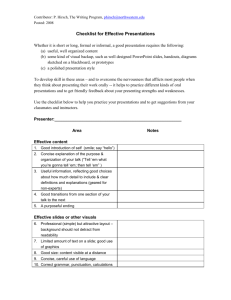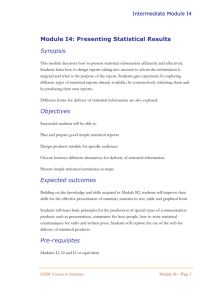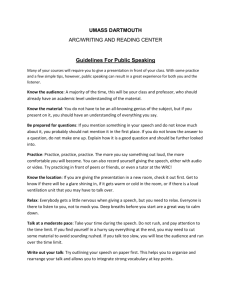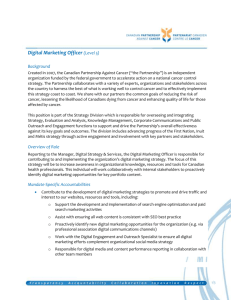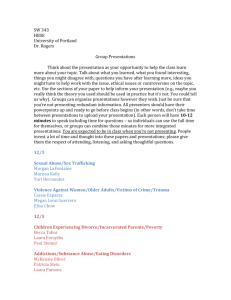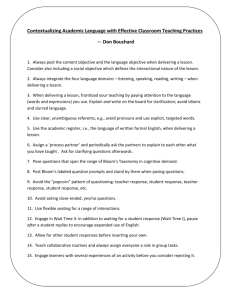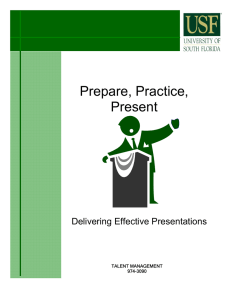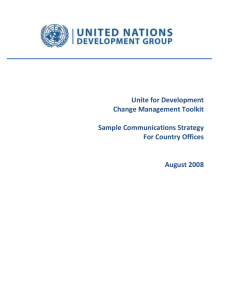3.3.2 Handout - Delivering effective presentations
advertisement
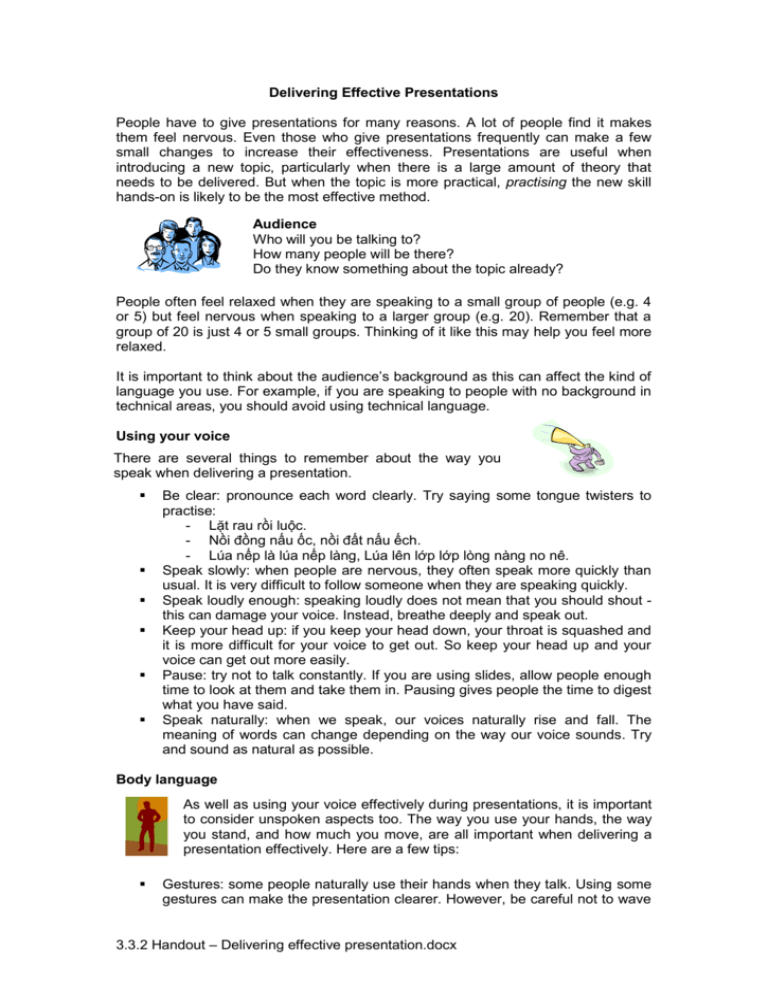
Delivering Effective Presentations People have to give presentations for many reasons. A lot of people find it makes them feel nervous. Even those who give presentations frequently can make a few small changes to increase their effectiveness. Presentations are useful when introducing a new topic, particularly when there is a large amount of theory that needs to be delivered. But when the topic is more practical, practising the new skill hands-on is likely to be the most effective method. Audience Who will you be talking to? How many people will be there? Do they know something about the topic already? People often feel relaxed when they are speaking to a small group of people (e.g. 4 or 5) but feel nervous when speaking to a larger group (e.g. 20). Remember that a group of 20 is just 4 or 5 small groups. Thinking of it like this may help you feel more relaxed. It is important to think about the audience’s background as this can affect the kind of language you use. For example, if you are speaking to people with no background in technical areas, you should avoid using technical language. Using your voice There are several things to remember about the way you speak when delivering a presentation. Be clear: pronounce each word clearly. Try saying some tongue twisters to practise: - Lặt rau rồi luộc. - Nồi đồng nấu ốc, nồi đất nấu ếch. - Lúa nếp là lúa nếp làng, Lúa lên lớp lớp lòng nàng no nê. Speak slowly: when people are nervous, they often speak more quickly than usual. It is very difficult to follow someone when they are speaking quickly. Speak loudly enough: speaking loudly does not mean that you should shout this can damage your voice. Instead, breathe deeply and speak out. Keep your head up: if you keep your head down, your throat is squashed and it is more difficult for your voice to get out. So keep your head up and your voice can get out more easily. Pause: try not to talk constantly. If you are using slides, allow people enough time to look at them and take them in. Pausing gives people the time to digest what you have said. Speak naturally: when we speak, our voices naturally rise and fall. The meaning of words can change depending on the way our voice sounds. Try and sound as natural as possible. Body language As well as using your voice effectively during presentations, it is important to consider unspoken aspects too. The way you use your hands, the way you stand, and how much you move, are all important when delivering a presentation effectively. Here are a few tips: Gestures: some people naturally use their hands when they talk. Using some gestures can make the presentation clearer. However, be careful not to wave 3.3.2 Handout – Delivering effective presentation.docx your hands around too much as this can distract the audience from what you are saying. Eye contact: when we have a conversation with someone, we usually look at their eyes. If you are speaking to a large group, it may not be possible for you to look into everyone’s eyes, but try to make eye contact with several people. Remember, you are talking to the people, not the room. Smile: if you smile at someone, they will usually smile back. Smiling will help you and the audience relax. Remove barriers: if you have some notes to refer to during the presentation, don’t hold them high so that people cannot see your face. If possible, there should be no barriers between you and the audience. Movement: you should not remain fixed in one place throughout the presentation. However, do not spend the whole time walking backwards and forwards as this is distracting. Stance: again, the key here is to stand naturally and look professional. Don’t put your hands in your pockets! Visual aids When using visual aids (e.g. objects, pictures or PowerPoint slides), remember the following: Size: the audience needs to be able to clearly see any visual aids you are using. Movement: if using PowerPoint, try not to use too many of the animation options. Too much movement distracts people from the content. Colours: as with animation, if there are too many colours, people are likely to find the presentation distracting. Using a few small, relevant pictures on slides is a good way of introducing some colour. Time: give the audience enough time to read the slide, or see the object or picture. Writing: keep text to a minimum on slides. There is no need for a slide to include everything you will say. A slide should have the main points on it, and then you can expand each point during the presentation. Dealing with nerves Feeling nervous before delivering a presentation is natural. In fact, many people would say it is a good thing as it increases the flow of adrenaline which helps you deal better with challenges. Even if feeling a little nervous is good, it is worth being aware of some techniques to make you feel a bit better. Preparing in advance is key as it gives you more time to practise and familiarise yourself with the content. Feeling more confident about what you are going to say is one way to reduce feelings of nervousness. If possible, arrive early and get used to the place where you will be speaking. Take a couple of deep breaths - this can help you to feel calmer. Don’t be afraid of the audience. It is likely to be full of friendly people who want to hear what you are going to say. And finally, remember that: Communication is 7% verbal, 38% vocal, and 55% visual. (Chrissie Wright (ed), ‘Communication Skills: A Practical Handbook’, p.22) 3.3.2 Handout – Delivering effective presentation.docx
